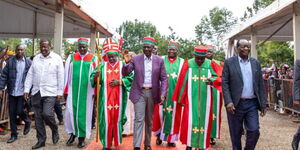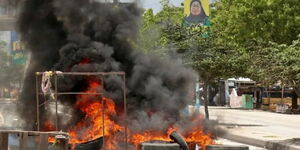The Kenyan currency on Monday, March 18, continued its exponential recovery trading at Ksh134 against the dollar.
As per Reuters, traders remarked that the strength was largely attributed to dollar inflows and importer demands to match.
This trade match made the Kenyan Currency continue holding its position as the world's leading currency in terms of growth.
The Kenyan Shilling has exhibited a historical turnaround considering less than 60 days ago, it was ranked the third-worst-performing currency worldwide.
Speaking in Narok County on Sunday, March 17, President William Ruto attributed the tough economic situations that had led to the depreciation of the Kenyan Shilling as having been precipitated by wanton borrowing by the previous administration.
Ruto assured Kenyans that with Kenya settling Ksh218 billion Eurobond floated in 2014, the economy was bound to grow stronger.
When there is a mismatch between dollar inflows and importer demands, it creates a dollar shortage in the country which in turn devalues the local currency.
A dollar shortage will then mean that Kenya has a low supply of dollars to import products which inhibits international trade.
This happens when Kenya pays more dollars (the main currency in international trade) for imported goods than it receives for its exports.
In an earlier interview with Kenyans.co.ke, Economist Vincent Kimosop explained that to ensure that the Shilling continues to strengthen, Kenya must export more than it imports so as to create a dollar surplus.
With Kenya using most of its foreign reserves to service foreign debts, getting a dollar surplus became elusive and culminated with the Kenyan Shilling trading against the dollar at a historical high of 160.
President Ruto’s administration put in several measures to tame the downward spiral of the Shilling which included early repayment of the Eurobond.
Additionally, Kenya was using most of its dollars to pay for fuel creating a scarcity in the market. In response to that, Ruto’s administration started buying fuel from Gulf countries through a 180-day credit line.
The long-term plan by the government to eliminate the dollar shortage is through subsidising production in line with the country's long-term vision of making Kenya a manufacturing nation. This, the government says will end overeliance on importation, especially on agricultural products.












